The Québec maritime Blog

-
Forillon National Park, Gaspésie
Parks Canada/Mathieu Dupuis
4 Surprising Facts about Forillon National Park
A sticky situation, a gravestone embedded with marine fossils, an old lady’s profile etched in rock… the landscapes of Forillon National Park are full of amazing stories that deserve to be told. Here are four of them!
Côte à M’lasse
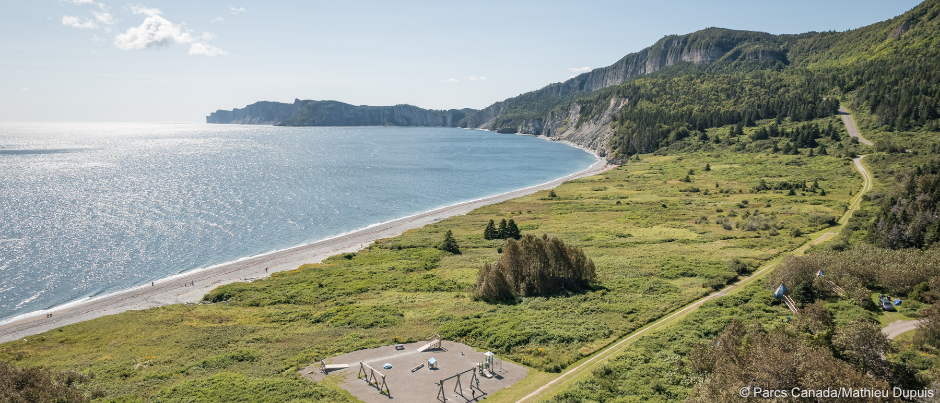 Côte à M’lasse is the stretch of paved road in the top right-hand corner of this photo.
Côte à M’lasse is the stretch of paved road in the top right-hand corner of this photo.
Some places in Forillon National Park have a colourful side that will pique your curiosity. Côte à M’lasse, from the local pronunciation of Côte à la Mélasse, which means “Molasses Hill,” is one such place. It’s a steep stretch of road in the North Area of the park, between the Des-Rosiers Campground and Cap-Bon-Ami.
The story goes that one fine day, a Capien—as the people living in Cap-des-Rosiers are called—was returning from Grande-Grave with a barrel of molasses in his cart. The villager and his horse crossed the Passe de la Grande Montagne (Great Mountain Pass), a carriage road between Grande-Grave and Cap-Bon-Ami that’s now part of the Mont-Saint-Alban trail. On the crest of the last hill, at the entrance to the village, the man stopped to let his horse rest. He took a moment to admire the village stretched out along the beach, then looked back and noticed a thin bronze line running from his cart all the way to the bottom of the hill. As he approached his barrel of molasses, he realized that his delicious cargo had slowly spilled down what became known as Côte à M’lasse!
Surprising fact: Côte à M’lasse lies at the juncture of two ancient, eroded mountain ranges that “met” over 450 million years ago. These two ranges, the Taconic and the Acadian, form the bedrock of our Appalachians.
A unique gravestone
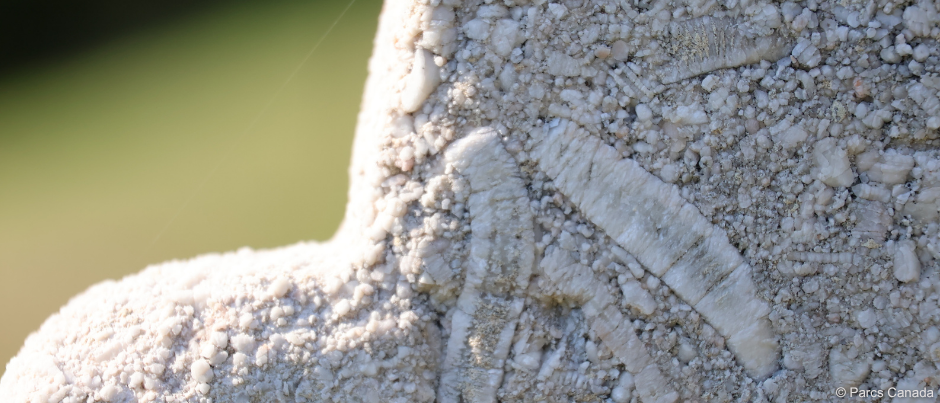 Can you see the palm-shaped markings on this gravestone?
Can you see the palm-shaped markings on this gravestone?
Intriguing white marks are visible on a gravestone in the Methodist cemetery at L’Anse-aux-Amérindiens. To solve the mystery of where they came from, we must go back a few million years!
If you look at this gravestone carefully, you’ll see an abundance of fossils imprinted in the stone. These are fragments of crinoids, marine animals that were present some 430 million years ago in today’s Gulf of St. Lawrence. Their shape resembles a palm tree.
This gravestone was erected in memory of Elizabeth Eleonore Hammond, the daughter of Jersey-born Elizabeth Langlois and John Elias Hammond. A fisherman and sailor, Hammond was also the first lightkeeper of the Pointe Sud-Ouest Lighthouse on Anticosti Island. He was holding this position when his daughter died in 1839, when she was only three years old. Built in 1831, the lighthouse is a stone structure hewn from Anticosti’s fossiliferous limestone… just like this gravestone. Could it be that Hammond returned to L’Anse-aux-Amérindiens for his daughter’s funeral with a unique stone that holds memories of a time when life was flourishing…?
Forillon National Park protects and showcases about 20 heritage buildings and five cemeteries. The Les Graves trail will take you past these sites that recall the history of the families that once inhabited this area.
Finding your fond de Penouille
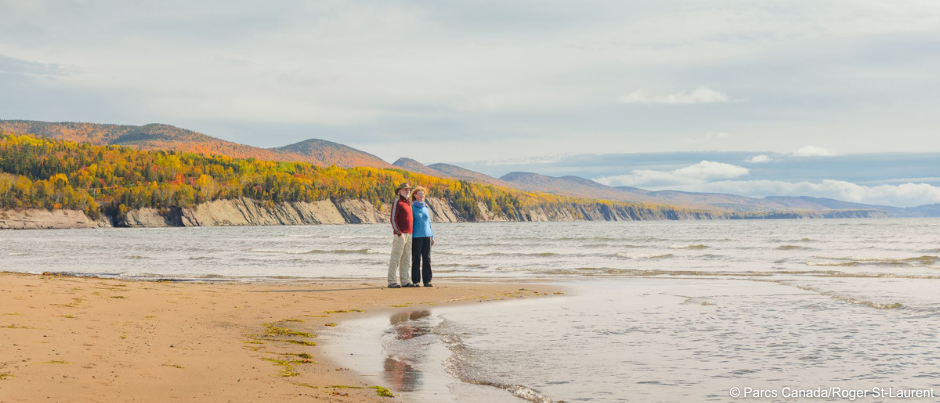 The Penouille sandspit is a dazzling place in the fall!
The Penouille sandspit is a dazzling place in the fall!
There are some forgotten local French expressions that deserve to be brought back to life. “Trouver son fond de Penouille” is one of them. (It could be loosely translated as “finding your own end of the bay.”)
In his book La Gaspésie au soleil (1925), local author, teacher and historian Antoine Bernard wrote: “Trouver son fond de Penouille has become a Gaspesian proverb meaning: to enjoy a calm life after hard times.” He added that the old fishermen were referring to the peaceful haven that this spot in Gaspé Bay represents.
Today, visitors can enjoy the Penouille Area’s sandy beaches, temperate seawater, salt marsh birds and sunsets.
Cap de la Vieille
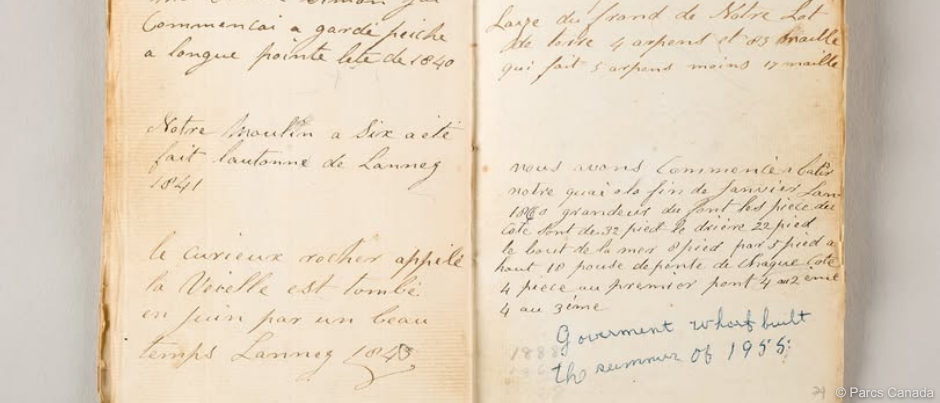 Excerpt from Pierre Simon’s diary: “The intriguing rock known as La Vieille [The Old Lady] collapsed in June on a beautiful day in the year 1843.”
Excerpt from Pierre Simon’s diary: “The intriguing rock known as La Vieille [The Old Lady] collapsed in June on a beautiful day in the year 1843.”
Oral heritage plays a key role in the history of Forillon. So you can imagine that coming across the manuscript of a 19th-century resident is as rare as it is invaluable!
According to his diary, Guernsey entrepreneur Pierre Simon settled in L’Anse-aux-Amérindiens in 1817. The diary goes on to record information of all kinds over the years, including his memories as well as watermill construction projects and property purchases. Simon also drew plans for rowboats, barges and whaleboats in this document.
Surprising fact: Pierre Simon wrote that “The intriguing rock known as La Vieille [The Old Lady] collapsed in June on a beautiful day in the year 1843.” This is the same monolith that Champlain referred to as the small forillon located a league from Cap Gaspé in 1626!
The rock’s name comes from the fact that explorers thought it looked like the profile of an old lady carved in limestone. La Vieille may have fallen, but Le Vieux (The Old Man) still stands guard at Land’s End!
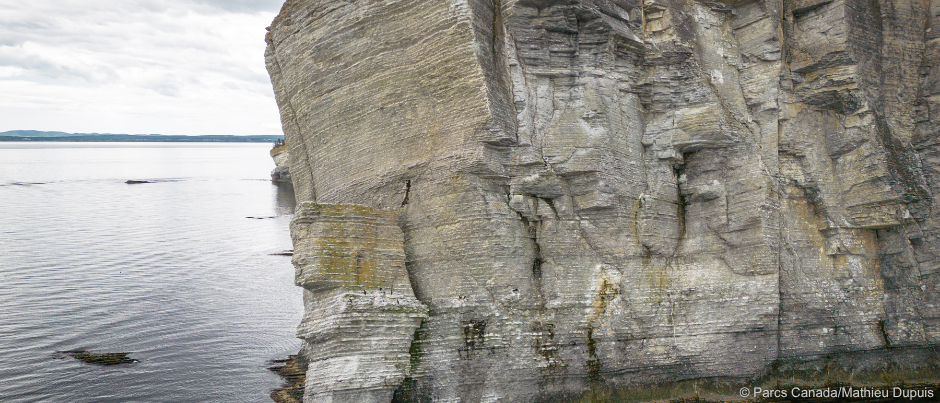 Le Vieux, at the foot of Cap Gaspé, also has a human profile.
Le Vieux, at the foot of Cap Gaspé, also has a human profile.
Forillon National Park has many stories to tell! Did any of these facts surprise you? To learn more, start planning your stay today!

(0) comment